Back To The Beginning
To fully understand the situation, we have to revisit the events that took place on April 15th, 2019. After an alarm went off in the cathedral, the premises were evacuated. By the time the staff figured out where the fire was, it had already fully taken grip of the building in its clutches.

Back To The Beginning
A Horrifying Reality
The Notre Dame staff had always feared something like this could happen. Since the structure was built in the 12th century, it was a known fact that its stonework was already in quite a vulnerable state. The oak beams used in the spire and attic, which date back to the 1200s, had dried out, posing a huge fire hazard.

A Horrifying Reality
What Caused The Fire
Fire wardens were already monitoring the building in 2019. However, that still did not help in preventing the blaze from taking over. It is believed that an electrical issue was to blame. Over the course of three hours, Parisians watched in horror as one of their most beloved treasures of the city went up in flames.

What Caused The Fire
Saving Priceless Artifacts
Hundreds of firefighters worked tirelessly to try to extinguish the fire, while emergency services formed a human chain in order to try to save the irreplaceable artifacts from the unrelenting fire. Hours dragged on before the fire was able to be tamed.

Saving Priceless Artifacts
The Damage
As the next morning’s sun rose, the damage was finally clear. About two thirds of the roof were totally destroyed, and the spire that dates back to the 19th century had completely collapsed. As the spire came tumbling down, it pierced a hole in the ceiling of the vault underneath it, exposing the Cathedrals interior to damage caused by the fire.
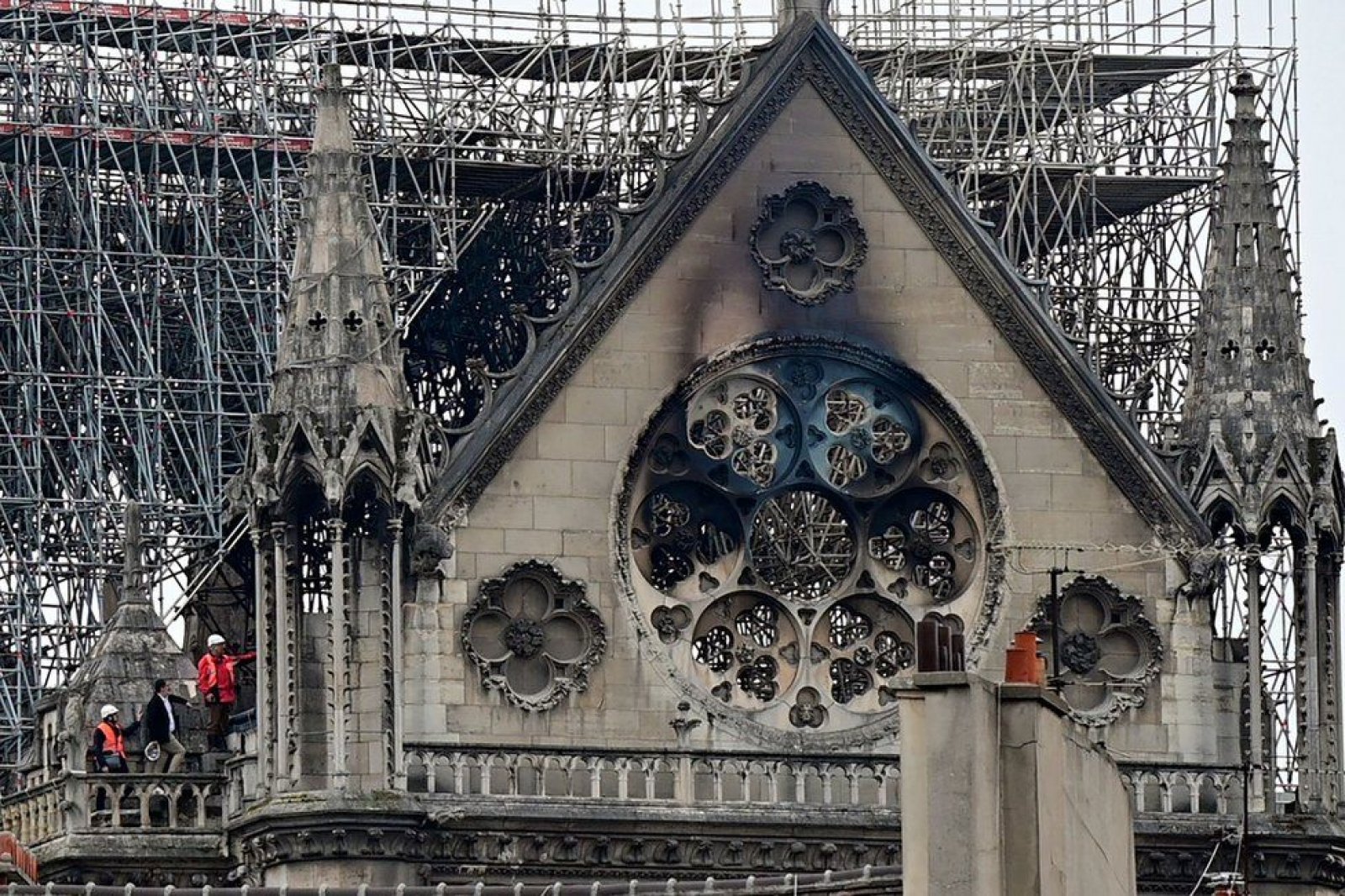
The Damage
Could They Be Saved?
Through all the chaos and madness, many were concerned about the irreplaceable artifacts stored in the Cathedral. Had they also been lost in the flames? Was anything able to be saved or even salvaged?

Could They Be Saved?
Important Christian Artifacts
Notre Dame housed many religious artifacts, including a crown of thorns that is believed to have been worn by Jesus. It also was home to a piece of ancient wood, which some believe may have been a part of the cross that Jesus was crucified on. However, it was not home to only important Christian artifacts.

Important Christian Artifacts
The Artworks At Risk
As people watched the Cathedral burn, they wondered what would be the fate of the famous 18th century organ, which musicians had to book years in advance in order to play it. The Cathedral was also home to statues that date back to the 1300s, as well as the Mays paintings, which were added to the structure between 1630 and 1707.

The Artworks At Risk
Sheer Luck
Despite the damage, Notre Dame was spared from the worst case scenario. Luckily, many of the artifacts and artworks that normally would have been there were located elsewhere. In 2018, general repair work and restoration was being done, and many of these important objects were being stored away in order to be kept safe. What luck!

Sheer Luck
The Volunteers’ Efforts
These objects were stored in the sacristy, a nearby building that luckily was not touched by the fire. The artifacts that were located in the burning building were largely saved by the rescue workers. However, there were some casualties that sadly could not be saved.

The Volunteers’ Efforts
How Much Was Actually Damaged
Maxime Cumunel of the Observatory for Religious Heritage told Reuters: “We have avoided a complete disaster. But some five to 10 percent of the artwork has probably been destroyed, [and] we have to face up to that.” As rescue workers removed paintings from the charred building, the reality of the situation started to become clearer.

How Much Was Actually Damaged
People Rushed To Help
The shocking fire did a number on many people, and many rushed to offer aid. French businessman Bernard Arnault donated about $200 million to help save and restore Notre Dame. Despite his and many others’ generosity, experts have estimated that the full repair work could end up costing billions of dollars.

People Rushed To Help
President Macron’s Promise
With the ruins still smoldering, restoration experts came in to do what they do best, and they began to sift through what was left behind in the fire. French President Emmanuel Macron promised that the iconic building would be restored and reconstructed. Now it was in the hands of the experts to execute.

President Macron’s Promise
The Heart Was Saved
Experts were relieved to see that a majority of Notre Dame’s relics were luckily spared. Aline Magnien of the Historical Monuments Research Laboratory told Science magazine: “What matters isn’t the roof and vault so much as the sanctuary they protect. The heart of Notre-Dame has been saved.”

The Heart Was Saved
Restoration Begins
With the gargantuan task of renovating and rebuilding ahead of them, Magnien and her team began with determining how to stop any further destruction from happening. The group of 23 experts hoped to use their research in order to help assist the construction workers rebuild the cathedral safely.

Restoration Begins
A Precarious Task
The road to recovery has been paved with many difficulties. The first issue the team faced was the damaged stonework of the cathedral. They realized that getting to the top of the vault could cause it to come tumbling down. However, observing it only from underneath would mean risking their lives due to the detritus.

A Precarious Task
Analyzing Stonework
This is why they have been partially unable to figure out how unstable the ruins of the cathedral actually are. What has helped is realizing that analyzing the color of the stonework could provide useful information. They shared that by observing the varying shades of the limestone blocks, the researchers could determine which temperature the blocks have been exposed to.

Analyzing Stonework
Determining The Strength
When exposed to temperatures between 570°F and 750°F, the iron contained in the limestone decomposes, leaving behind a red residue. Higher temperatures causes the color to turn to black. Once 1500°F is reached, the blocks are reduced to powdery ash. This is how the researchers were able to determine the strength of each individual stone.

Determining The Strength
Water Damage
Another problem the restoration workers faced was water damage that had made its way into the ruins. Firefighters were instructed to aim water away from the ancient and quite fragile stained glass windows. However, they weren’t able to do the same for the stone vault, which was directly threatened by the fire.

Water Damage
An Unstable Structure
Firefighters aimed the hoses directly on the limestone, causing the porous material to fully absorb much of the water. This led to increased weight, and even a year later, the structure has not fully dried out. The water trapped in the stone also expands or contracts (depending on the temperature), creating even more uncertainly to the already unstable building.

An Unstable Structure
The Ultimate Goal
The restoration and reconstruction efforts are ongoing, with President Macron promising that the public will be able to visit a repaired Notre Dame by 2024. As the restoration efforts continue, researchers have been able to have a glimpse into insights about the hundreds of years old Parisian landmark.

The Ultimate Goal
Communicating With The Past
In Science magazine, metal specialist from the LRMH, Phillippe Dillmann, explained: “We’re sorting these thousands of fragments – some from our world, some from another and more ancient world. And it’s like we’re communicating with the Middle Ages.” This gives experts huge insight into the 13th century stone makers building techniques.

Communicating With The Past
A Silver Lining
Despite the heavy damage to the great attic of the cathedral, there is still a silver lining. New information was deduced, as inspection of the remaining beams showed that the wood came from a grown-to-order forest that was dedicated to the construction. That meant that the cathedral’s plans for construction were intended for at least 100 years before the construction work actually began.

A Silver Lining
Poisonous Lead
Although the cathedral had a miraculous stroke of luck in that it was not completely destroyed, the damage to the city and its people may not have been as lucky. While Notre Dame’s roof burned, a significant amount of poisonous lead was released into the atmosphere as it melted. What’s worse is that it has still yet to be traced.

Poisonous Lead
Lead On The Roof
Many structures around the world still have lead present. As it can be toxic, lead poisoning can cause both neurological and physical issues. Lead has also been linked to infertility, seizures, behavioral issues, and even death.

Lead On The Roof
Should They Be Concerned?
Many citizens of Paris grew concerned over Notre Dame’s roof lead contaminating the air of the areas around the burned building. In the aftermath of the fire, section chief at LRMH Aurélia Azéma assured citizens that the blaze was not hot enough to transform the lead into gas.

Should They Be Concerned?
Something Sinister Lurking
Experts further explained that the melted lead remained within the cathedral, as it formed stalactites as it solidified. City officials did not issue out public safety warnings, so most Parisians felt that they were safe. But was there something more sinister happening right under their noses?

France Notre Dame Fire
Yellow Haze
Some witnesses claimed to have seen a yellow haze materializing over the cathedral as the fire blazed on. Some experts disagreed with the original analysis and insisted that the fire did actually exceed temperatures needed for lead to combine with oxygen. That means that some toxic material would have definitely made its way around the air of the city.

Yellow Haze
Contaminated Air
If that were the case, just how fat could this toxic material travel? For weeks, authorities did not test the surrounding neighborhoods. When they finally did, they found that several schools contained concerning levels of lead. Even some other areas, recreational ones included, came back with readings of over 60 times the recommended amount.

Contaminated Air
Trace Amounts?
French law dictates that only trace amounts of lead are allowed to be used on buildings. There have been some rumors and allegations that officials have not been honest about the actual, and potentially dangerous, levels of led dispersed by the fire. The New York Times reported in 2019 that the risk may have even been apparent days after the disaster, but that officials did not act on it.

Trace Amounts?
Past The Limit
An environmental group based in France called Robin Hood announced some distressing news in 2019. They shared that residents of an apartment just one mile from the cathedral requested that lead tests be administered on their property. The results showed that the apartment’s balcony returned levels nearly 20 times the recommended limit.

Past The Limit
A Long-Term Problem
A Parisian police station later reported that it found lead levels eight times the legal limit. Union representative Frédéric Guillo shared his mounting concerns: “It proves once again that the lead contamination caused by Notre-Dame fire is a serious, long-term problem that authorities need to protect their citizens from.”

A Long Term Problem
Found In A Day Care
Just two days after the fire, lead was found in a day care center at the Police Headquarters. The center was closed down, but the surrounding areas were not shut down. This was where the problem really began.
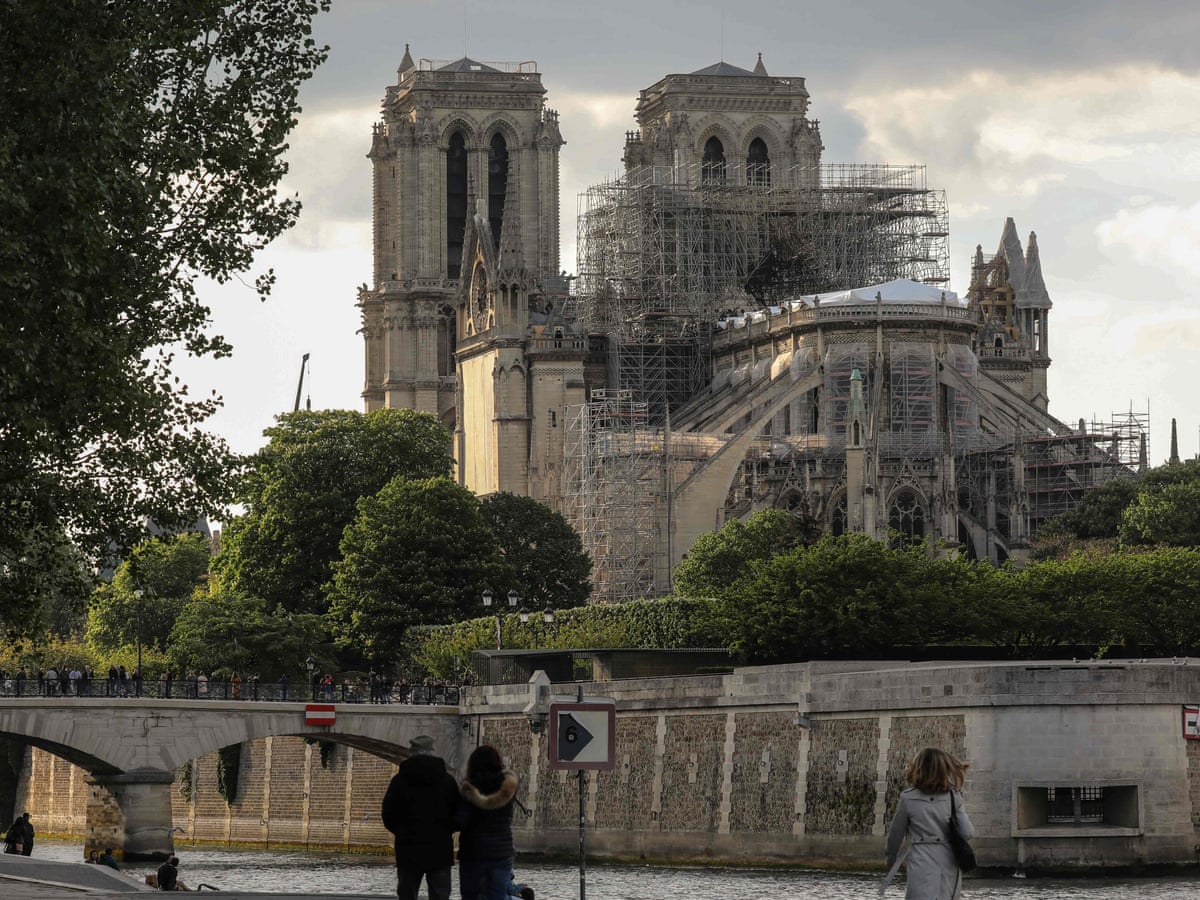
Found In A Day Care
Lead In The Air
The fact remains that lead-laced dust made its way onto buildings, parks, squares, and plazas. What was even more concerning is that through open windows, air conditioning ducts, and even other ventilation systems, the lead made its way into people’s homes and public places.

Lead In The Air
Tests Were Delayed
Although there were tests conducted to check the levels of lead in the area, they were only done a month after the fire. That means that children in nearby public schools were already exposed to very high levels of lead for an extended period of time.

Tests Were Delayed
Even Worse Timing
What’s worse is that some areas were not tested until four months after the fire took place. This means even more exposure to these damaging and toxic lead fumes.

Even Worse Timing
Toxic Leak
Although it is very concerning that the surrounding areas have shown concerning levels of lead, the cathedral itself still remains the ground zero of dangerous levels of lead. Azéma was able to detect traces of lead all throughout Notre Dame, including inside organ pipes. Scientists also made another unsettling discovery on the premises.

Toxic Leak
A Concerning Amount
LRMH team member and wood specialist Emmanuel Maurin tested the surfaces of materials around the church, including oak. He found that there were levels of lead about 70 times the recommended limit. This was especially concerning, as the restoration workers who had been on the premises for months already were had not been equipped even with proper clothing.

A Concerning Amount
Following Safety Protocol
Luckily as these concerning lead levels were discovered, changes were made. By March 2020, the restoration workers were required to follow rigorous safety protocols and decontamination procedures. Workers are only allowed to be in the building for two and a half hours at a time and they must dispose of their safety garments afterwards. They then must wash themselves rigorously, and sometimes may need to take multiple showers a day.
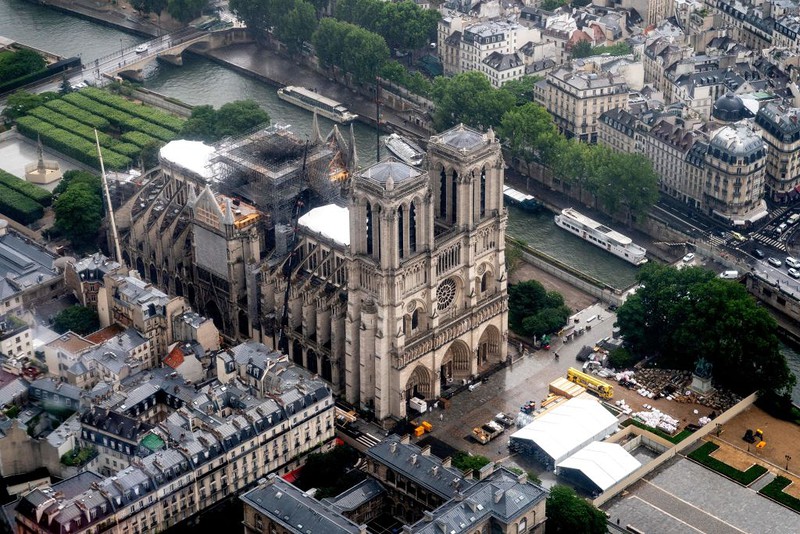
Following Safety Protocol
Failed To Clean Up Properly
Another concerning point is the fact that authorities did not properly clean the surrounding areas around the church directly after the fire. It actually took four months of a full decontamination to take place in the surrounding neighborhood.

Failed To Clean Up Properly
Has It Been Going On?
Now it is clear that there is a concerning amount of lead around Notre Dame, but some have suggested that it may have been releasing lead to the environment even years before the fire. Some speculated that rainwater traveling down the cathedral’s roof may have washed toxic lead into the Seine River near it. That means that the contamination could have been going on for hundreds of years.

Has It Been Going On?
Taking Samples
In order to fully understand the whole picture, scientist Sophie Ayrault has taken on the task of testing samples in order to trace the toxins back to the cathedral. She will take samples at Notre Dame and compare them to samples collected from the surrounding areas.

Taking Samples
How To Remove The Lead?
As the mystery is being investigated, LRMH has been trying to figure out how to remove the lead from Notre Dame’s ruins. One approach suggested involves using a special putty in order to remove the toxic material and then to use a laser to clean the stones. Geologist Véronique Vergès-Belmin of the LRMH’s stone department has said that multiple strategies will likely need to be used.

How To Remove The Lead?
A Potentially Dark Legacy
In April 2019, President Macron promise that the cathedral would be rebuilt and made “more beautiful than before.” LRHM researchers agree, with Magnien telling Science magazine: “Notre-Dame will come out of this experience enriched. And so will we.” However, the fact that surrounding schools and parks may have been exposed to toxic levels of lead, perhaps the fire will leave behind a dark legacy.

A Potentially Dark Legacy
Virtual Reality Experience
Since the iconic cathedral will be shut down to the public for the upcoming years, many have yearned to visit. A virtual reality experience has been created in order to allow people to still “visit.” The 360 degree movie called Rebuilding Notre Dame tells the building’s story while sharing detailed views of its interiors and exteriors.

Virtual Reality Experience
Playing It Down?
According to a New York Times article, apparently the French authorities took their time with exposing the truth that was discovered regarding the levels of lead exposed to the air and may have even played down the danger. They did so in order to prevent the public from being alarmed.

France Notre Dame
It Went On For A While
According to the same New York Times article, Culture Ministry officials played down the risks posed by the lead exposure even as late as May following the fire. However, the ministry denies these claims.

It Went On For A While
Refusing To Show Results
When asked to show blood lead test results of workers who were in the contaminated zone, Health authorities refused to do so, saying that it would be a breach in medical record confidentiality.

Refusing To Show Results
No Required Tests
Despite what experts recommended, authorities also decided against mandatory blood lead tests for the children who were attending school or living nearby the affected area. Parents who did want to test their children faced many delays and obstacles.

No Required Tests
Still Safe To Visit?
You might be wondering that given the circumstances if it is still safe to visit Paris. According to experts the The New York Times consulted with, the answer is yes.

Still Safe To Visit?
Decontaminated Area
French experts have said that it is quite safe to be in the Île de la Cité area, where Notre Dame is located. Dining in the area should not be a concern either, as all the businesses in the surrounding area have been thoroughly cleaned.
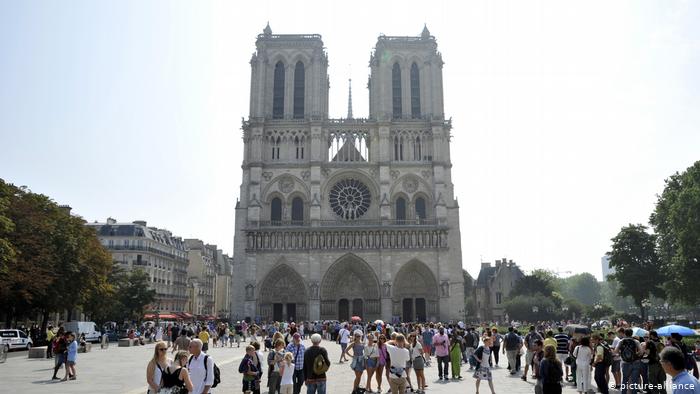
Decontaminated Area
Some Precautions
While it is safe to visit the area, there are still some precautions that you might want to take, just to err on the side of caution. It is recommended to avoid the immediate vicinity of the church, especially with children under the age of 6.

Some Precautions
What To Do
Professor of pediatrics and public health at Boston University and direction of the Boston Lead Poisoning Prevention Program Dr. Sean Palfrey said: “I would be saying to parents, ‘Don’t panic, these are the three or four things you should do.” This includes residents washing their children’s hands very carefully to avoid them inserting any dust into their mouths.

What To Do
Diet Rich In Iron
Dr. Palfrey also suggest people in the area to consume and feed their children a diet rich in iron and calcium which can help displace lead that has entered the body and helps it be less likely to be absorbed into the system.

Diet Rich In Iron
Avoid The Dust
It is best to clean up using wet mops as opposed to vacuum cleaners, as they might actually stir up dust instead of wiping it away altogether. It is important to get rid of as much contaminated dust as possible.

Avoid The Dust
Keep It Clean
Dr. Jessica Wolpaw Reyes, a professor at Amherst College, recommends: “If I could tell parents one thing, it’s that they should leave shoes at the door, keep the house really clean of dust and make sure everyone washes up before they eat.”

Keep It Clean
Everyone Agrees
All the experts do agree on one fact: the French government must absolutely ensure that the city, its schools, and public areas all must be thoroughly cleaned and as soon as possible.
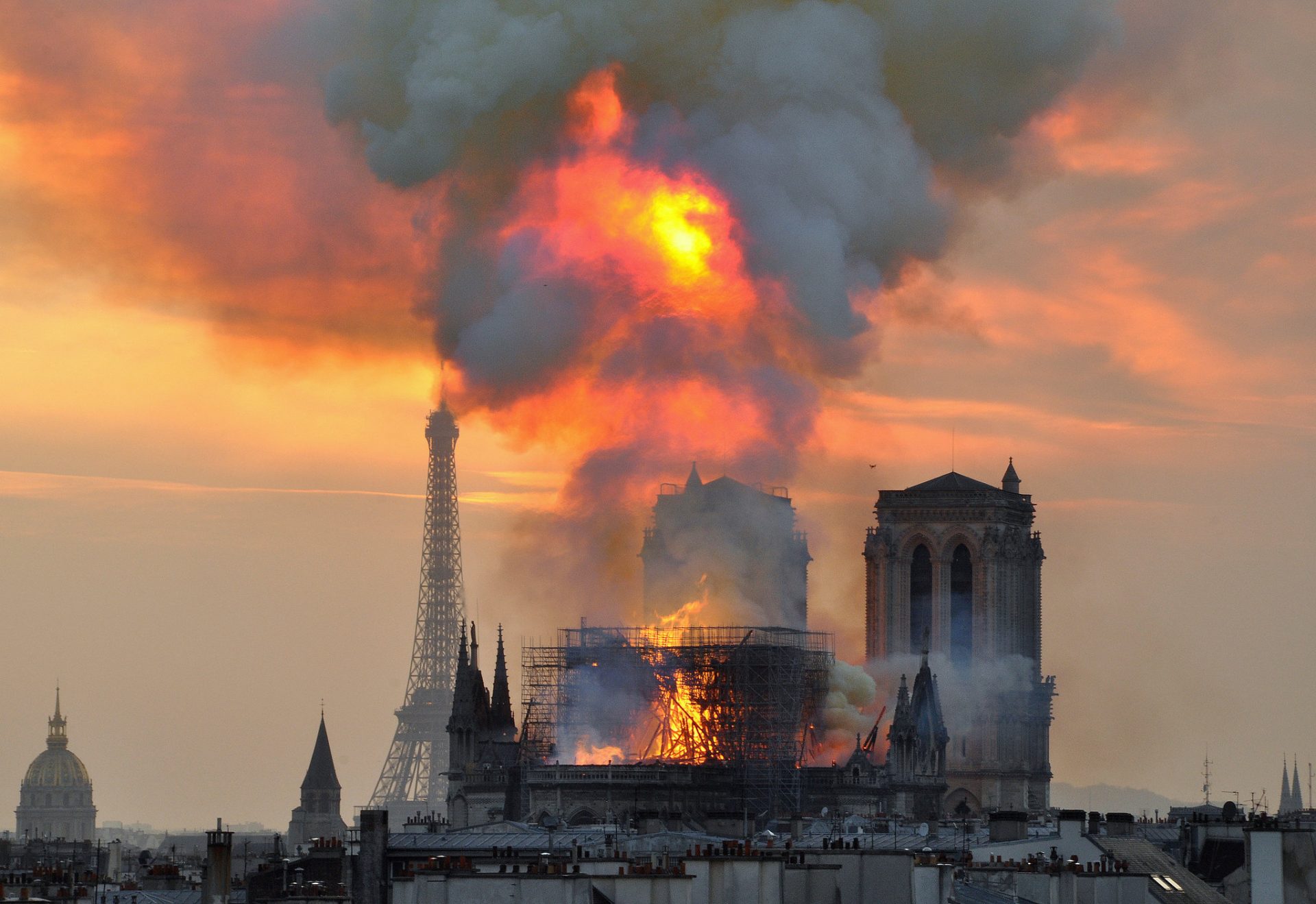
Everyone Agrees
How Bad Is It?
As Philippe Glorennec, professor of health risk assessment at the EHESP School of Public Health in Paris says: “We must put things into perspective: Lead is a problem in France, like elsewhere, and we must deal with contaminations. We should pay attention to the Notre-Dame situation,’’ he said. But be alarmed? No.”

How Bad Is It?
Don’t Stress, Test
According to Dr. Morri Markowitz who is the director of lead treatment and poisoning prevention program at the Children’s Hospital at Montefiore in New York, the only way to really know if you’ve been exposed to lead is simply to get tested.

Don’t Stress, Test
Varying Levels of Concern
Dr. Markowitz continued: “While the transient tourists probably did not accumulate much lead, the same might not be true for those that live and work close by.” It’s best to be safe than sorry, so if you were in the area, go ahead and get tested.

Varying Levels Of Concern



